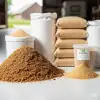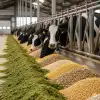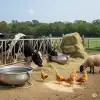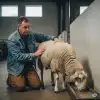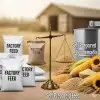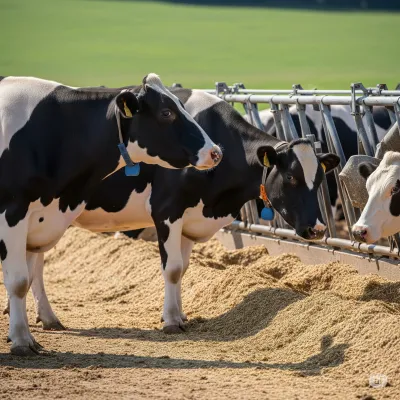How Should the Dry Period Ration Be? The Key to the Next Lactation
In dairy cows, the dry period is critical for future lactation yield and animal health. This blog post covers how the dry period ration should be, what to consider, and common mistakes. Learn practical information!
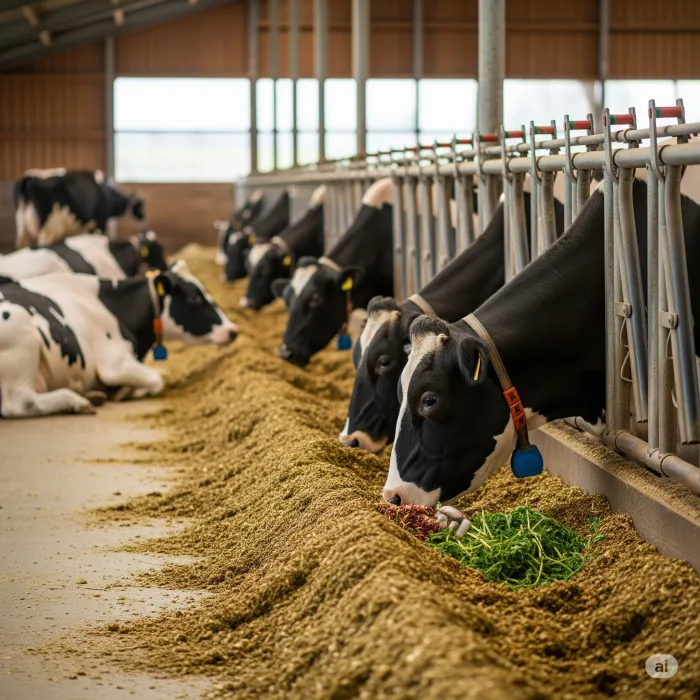
How Should the Dry Period Ration Be? The Key to the Next Lactation
---In dairy cattle farming, the **dry period**, which is the inter-lactation transition period, is as important as the lactation period for the animals' productivity and health. The dry period is a critical phase for preparing the cow optimally for the next lactation, regenerating mammary glands, and ensuring healthy calf development. Proper management of this period, especially the **dry period ration**, directly affects the yield of the next lactation and the animal's overall health. So, how should the dry period ration be?
Why is the Dry Period Ration So Important?
The dry period is a process where the cow rests, mammary glands regenerate in preparation for the next lactation, and the fetus grows rapidly. Feeding errors during this period can lead to postpartum metabolic diseases (milk fever, ketosis, displaced abomasum), mastitis, and low milk yield. A correct dry period ration, on the other hand:
- Ensures the repair and regeneration of mammary glands.
- Supports healthy fetal growth.
- Reduces the risk of postpartum metabolic diseases.
- Strengthens the cow's immune system.
- Establishes high milk yield potential in the next lactation.
Basic Principles of the Dry Period Ration
The dry period typically lasts 45-60 days and is divided into two main phases: **Far-Off Dry Period** (4-6 weeks before calving) and **Close-Up Dry Period** (last 2-3 weeks before calving). Both phases have unique feeding needs.
1. Far-Off Dry Period Ration (4-6 Weeks Before Calving)
The main goal during this period is to maintain the cow's body condition and prevent excessive fatness. Overweight cows may experience difficulties during calving and may be more prone to postpartum metabolic diseases.
- Energy: Moderate energy should be provided. A ration based primarily on quality forages is usually sufficient. Corn silage or quality hay can be the main components of the ration. Excessive use of concentrated feeds should be avoided.
- Protein: Moderate protein (approximately 12-14% crude protein) is sufficient. It can be supplied from forages and small amounts of protein sources (e.g., soybean meal).
- Fiber: Sufficient fiber (NDF) should be provided for rumen health. This provides a feeling of fullness and supports rumen functions.
- Minerals and Vitamins: Macro and micro minerals, along with vitamins, should be given in a balanced manner. Especially **Calcium (Ca)** intake should not be kept high during this period. High calcium intake can make the cow's own bone calcium mobilization mechanism sluggish and increase the risk of postpartum milk fever.
2. Close-Up Dry Period Ration (Last 2-3 Weeks Before Calving)
This period is the most critical phase where the cow is metabolically prepared for calving and lactation. The ration should be specifically formulated to minimize postpartum problems.
- Energy: Energy requirements are slightly increased for rapid fetal growth and mammary gland development. However, excessive energy loading should still be avoided. Small amounts of energy concentrate (e.g., barley or corn) can be added.
- Protein: Protein requirements increase slightly (approximately 14-16% crude protein). Quality protein sources should be used.
- Minerals and Vitamins: Mineral balance is vital during this period.
- Calcium (Ca) Management: To prevent milk fever, dietary calcium levels should be lowered, or **anionic salts** (e.g., magnesium sulfate, calcium sulfate, ammonium chloride) should be used. Anionic salts slightly lower blood pH, increasing the cow's ability to mobilize calcium from her bones and significantly reducing the risk of postpartum milk fever. The DCAD (Dietary Cation-Anion Difference) value of the ration should be negative or low positive.
- Magnesium (Mg): Critical for calcium metabolism. Adequate magnesium intake must be ensured.
- Phosphorus (P) and Vitamin D: Important for bone health and metabolism together with calcium. Vitamin D supports calcium absorption.
- Trace Minerals and Vitamins: Trace minerals like Selenium (Se), Zinc (Zn), Copper (Cu), Manganese (Mn), and Vitamins A, D, E should be provided at adequate levels to strengthen the immune system and support calf health. Especially Vitamin E and Selenium are important for immunity and mastitis prevention.
- Feed Transition: The transition to the postpartum lactation ration should be gradually initiated during this period. Small amounts of lactation feeds can begin to be added to allow the rumen microflora to adapt to the new ration.
Common Mistakes in Dry Period Rations and Ways to Avoid Them
- Excessive Energy Feeding: Leads to the cow becoming overweight and causes postpartum metabolic problems. Energy restriction is important during the dry period.
- High Calcium Content: Especially in the close-up dry period, high calcium increases the risk of milk fever. DCAD management or calcium restriction should be applied.
- Insufficient Fiber: Disrupts rumen health and causes digestive problems. Quality and sufficient forage must be provided.
- Sudden Feed Changes: Shocks the rumen microflora and leads to digestive problems. Transitions should always be gradual.
- Insufficient Water Access: Water is vital for all metabolic functions. Continuous access to clean and fresh water must be ensured.
Conclusion: The Dry Period is Essential for a Successful Lactation!
The dry period is a bridge that should not be overlooked in dairy cattle farming. A properly formulated dry period ration is the key to maintaining your cow's health, minimizing postpartum problems, and achieving maximum yield in the next lactation. Remember, the investment during this period will pay you back many times over in the next. Getting support from an animal nutritionist or veterinarian will help you optimize your ration.
How do you manage your dry period rations? Share your experiences and tips with us in the comments!
